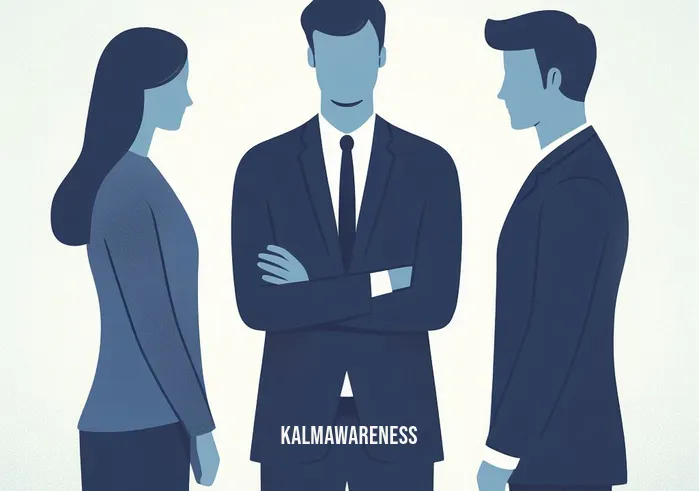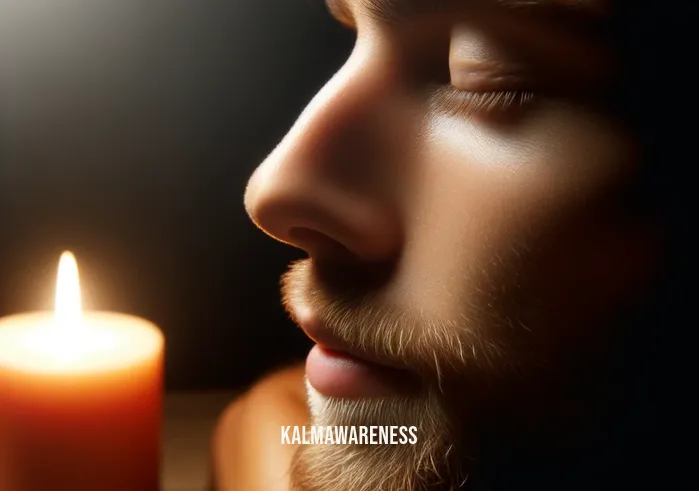Trust Relationship Definition: The Bedrock of Human Connections
Trust is the invisible force that binds us, it’s the silent language of human interaction, and it’s the foundation upon which all forms of connection are built. While trust might seem like a simple concept, its implications ripple through every facet of our lives. From friendships and family ties to professional relationships and community involvement, trust plays a pivotal role. By delving deep into the trust relationship definition, we’ll explore the profound ways it impacts our lives and society.
The Essence of Trust in Relationships
Trust is the confidence we place in someone or something. It’s believing that an individual or entity will act in a way that’s consistent with our expectations. It’s rooted in reliability, predictability, and a sense of safety. For relationships to flourish, whether they’re personal or professional, trust is indispensable. As observed in the mindful relationship habits, fostering trust can significantly enhance the quality and depth of any relationship.
The Many Faces of Trust
Trust isn’t monolithic; it takes on various forms depending on the context:
Emotional Trust: This is perhaps the most personal form of trust. It’s the belief that someone will handle our emotions with care, respect, and understanding. Emotional trust forms the bedrock of intimate relationships. It’s akin to the sense of security one feels when practicing techniques like desert meditation, where the vastness and stillness of the environment assure tranquility.
Reliability Trust: This is about believing that someone will do what they say. For instance, if a person commits to practicing ancient African meditation techniques daily, and they stick to it, they demonstrate reliability.
Competence Trust: This is about believing that someone has the necessary skills and knowledge to do what they’re tasked with, such as leading a galactic chakra meditation session.
Ethical Trust: This type of trust revolves around shared values. It’s the belief that someone will act in ways that are morally acceptable to us, aligning with principles like those found in the teachings of mindfulness to be happy now.
Connection and Community: The Role of Trust
Trust is paramount in building a sense of community. It’s the glue that binds individuals and allows them to work cohesively. This sense of trust, or the “social glue,” is analogous to the insight that your feet don’t anchor you, your friends do. Trust fosters a feeling of belonging, and when individuals trust each other, communities can thrive.
Furthermore, fostering trust within a community can lead to mutual understanding and respect. As posited in Brené Brown’s square squad, trust nurtures a sense of belonging, creating an environment where individuals feel valued and heard.
The Journey of Trust: From Mind to Emotion
Trust isn’t merely a cognitive understanding; it’s deeply emotional. The journey of trust is intricately linked to our emotions. As we’ll discover in the subsequent segments, our ability to trust is shaped by our past experiences, our perception of the present, and our hopes for the future. Similar to how embodiment and the inner life connect our physical and emotional worlds, trust bridges our cognitive understanding with our emotional realities.
Embracing trust and understanding its nuances can lead to richer, more fulfilling relationships. It’s a topic worthy of deep exploration, touching on numerous aspects of human interaction and emotion.
To truly grasp the profound effects of trust on our lives and the world around us, continue reading in the next segment where we delve deeper into the interplay of trust, relationships, and connection.

Building Blocks of Trust: Beyond the Definition
While we’ve begun to explore the trust relationship definition, understanding its intricacies requires a more profound dive. At the core of every human connection lies trust, a multifaceted entity that can be deconstructed, analyzed, and then woven back to create thriving relationships. This chapter delves into the various components that make up trust, and how they interrelate in the grand tapestry of human connections.
The Evolution of Trust Over Time
As with any emotion or connection, trust isn’t static. It evolves over time, shaped by experiences, perceptions, and lessons learned. For instance, just like the gradual progression observed in mindful attraction 2.0, trust can grow, adapt, and sometimes, unfortunately, diminish.
Components of Trust
Trust isn’t a singular entity; it comprises various components. Understanding these can give insights into how trust is built, maintained, or even lost.
Transparency: It’s the willingness to be open, honest, and vulnerable. Much like the rawness experienced in practices like etheric cords definition, transparency in relationships paves the way for genuine trust.
Consistency: Trust is cultivated over time, with consistent actions and words. The repetitive patterns found in techniques like soles of the feet meditation can be likened to the consistency required in building trust.
Integrity: This revolves around doing what’s right even when no one’s watching. It mirrors the values emphasized in mindful healthcare, where caregivers prioritize patient welfare above all.
Mutual Respect: Recognizing and valuing the differences in each other. Much like the appreciation of diverse perspectives in cosmic energy activation, mutual respect in relationships bolsters trust.
Communication: A vital component, ensuring misunderstandings are minimal. Reflecting principles seen in meditation for marriage, effective communication is key to a trust-filled relationship.
Factors Influencing Trust: A Table Overview
| Factor | Influence on Trust | Example |
|---|---|---|
| Life Experiences | Past experiences can either reinforce or diminish trust. | Overcoming a betrayal might make someone more cautious in giving trust. |
| Cultural Background | Different cultures have varying norms about trustworthiness and showing trust. | In some cultures, maintaining eye contact is a sign of trustworthiness. |
| Personal Values | The values one holds dear can shape how trust is given or taken. | Someone valuing honesty might trust a candid person more. |
| Emotional State | One’s current emotional status can influence trust decisions. | Someone feeling vulnerable might find it hard to trust readily. |
| External Influences | External factors like societal norms can impact trust. | Media portrayal of certain groups can influence trust levels towards them. |
Why Trust Matters in Every Facet of Life
Trust is not just limited to personal relationships. Its importance extends to every facet of life. Whether it’s trusting a brand, a community initiative, or even the process of sleep meditation for women, trust lies at the heart of every engagement.
Gearing Up For Deeper Insights
While we’ve significantly expanded on the trust relationship definition, there’s still much ground to cover. From its role in societal structures to its impact on individual well-being, trust is a vast realm to explore.
Intrigued by the facets of trust we’ve unraveled so far? Brace yourself for a deeper exploration in the next segment where we’ll traverse the labyrinth of trust’s societal implications and its pivotal role in shaping communities. Dive in deeper and continue reading in the next chapter.

Trust’s Inspiring Tapestry: Stories of Hope and Resilience
Trust, a seemingly intangible force, has always held societies together, weaving stories of hope, resilience, and inspiration. Deepening our understanding of the trust relationship definition unveils heartwarming tales that emphasize its importance. Through quotes, real-life examples, and evocative tales, we’ll shed light on the transformative power of trust.
Trust’s Echo in Inspirational Quotes
Throughout history, luminaries have reflected on trust, leaving us with pearls of wisdom:
- “Trust is the glue of life. It’s the most essential ingredient in effective communication. It’s the foundational principle that holds all relationships.” – Stephen R. Covey
- “He who does not trust enough will not be trusted.” – Lao Tzu
- “The best way to find out if you can trust somebody is to trust them.” – Ernest Hemingway
- “Trust is built with consistency.” – Lincoln Chafee
- “Trust is only gained when one person risks and doesn’t get harmed. It grows as both people increasingly risk and don’t get harmed in the process.” – Glen Williams
Illuminating Stories of Trust
Rebuilding After Betrayal: Linda and Mark had been best friends since college. But when Mark shared Linda’s secrets in a vulnerable moment, trust was broken. Instead of cutting ties, they engaged in practices like loving bravely worksheets, where they delved deep into their emotions. Over time, with openness and effort, they not only rebuilt trust but forged a bond even stronger than before.
The Power of Shared Values: In a village in Africa, two communities had historically been at odds. But when both communities started to appreciate the ancient African meditation techniques and their shared cultural roots, they found common ground. Mutual respect flourished, and trust bridged the divide, bringing lasting peace.
Embracing Differences: At a global firm, team members hailed from different cultures, often leading to misunderstandings. Using principles from Bo Shao’s wife’s teachings, they learned to appreciate and trust in their unique strengths. The team’s diversity became its biggest asset.
An Unexpected Connection: Maya, a city dweller, was initially wary of her new rural neighbors. But when she decided to join them in galactic chakra meditation sessions, barriers melted. Mutual trust flourished as they connected on a spiritual level.
Hope in Trust’s Power: A Societal Reflection
Societies stand strong on trust’s foundation. Take the lesson from maybe we are supposed to meet the wrong person. Often, adversity and challenges highlight the importance of trust. Trust can rebuild broken bridges, heal old wounds, and inspire communities to rise.
The tales of trust not only inspire but also offer lessons on the role of vulnerability, understanding, and patience in building genuine connections.
Gearing Up for the Finale: The Science of Trust
While the stories of hope and resilience revolving around trust captivate our hearts, there’s a scientific angle to explore. Trust isn’t just emotional; it’s deeply rooted in our biology and psychology. Eager to uncover the science behind trust and its intricate dynamics? Journey with us in the next segment, where we demystify the science of trust, offering insights that merge emotion with logic. Dive deeper into this fascinating topic in the next chapter.

The Anatomy of Trust: A Comprehensive Breakdown
Diving deeper into the trust relationship definition, we recognize that trust, as a cornerstone of human connections, isn’t merely about believing in someone or something. It is layered, intricate, and dynamic. Let’s dissect trust, breaking down its components and the factors influencing it for a granular understanding.
Components that Construct Trust
To genuinely understand trust, it’s essential to identify and delve into its core components:
Vulnerability:
- Definition: Opening oneself up, risking potential emotional harm.
- Example: Sharing personal stories or fears.
- Relevance: It’s through vulnerability that genuine connections are built, as highlighted in every time you come around.
Predictability:
- Definition: The reliability of a person’s actions over time.
- Example: Always being punctual for meetings.
- Relevance: Consistency in behavior fosters a sense of security.
Dependability:
- Definition: Reliance on someone to act in your best interest.
- Example: A friend backing you up in a challenging situation.
- Relevance: Acts as the bedrock for deeper connections.
Confidentiality:
- Definition: Ensuring private information remains private.
- Example: Keeping a secret when promised.
- Relevance: Confidentiality breeds confidence in the relationship.
Factors Influencing the Dynamics of Trust
Trust doesn’t operate in isolation. Several external and internal factors mold it:
Past Experiences:
- Positive experiences bolster trust, while betrayals can lead to hesitation.
- Overcoming trust issues can sometimes require interventions, like the ones highlighted in mindful health care.
Cultural Nuances:
- Different cultures view trust differently, often influenced by societal norms and values.
- For instance, trust dynamics in collective cultures might differ from individualistic cultures.
Communication Patterns:
- Clear communication reinforces trust, while ambiguity can erode it.
- Techniques like those in touch that body part emphasize the importance of understanding non-verbal cues in trust-building.
Shared Goals and Values:
- Aligning values and objectives can significantly enhance trust among individuals.
- It’s akin to the synergy one feels when practicing cosmic energy activation.
Trust’s Role in Different Relationships
Trust isn’t uniform; its role and significance vary across relationships:
Familial Relationships:
- Built on unconditional love, trust in family often has a stronger foundation.
- Betrayals, however, can have deeper emotional impacts.
Professional Relationships:
- Trust revolves around reliability, competence, and mutual respect.
- It’s crucial for teamwork, collaboration, and organizational success.
Romantic Relationships:
- Trust involves vulnerability, predictability, and emotional safety.
- As explored in loving bravely worksheets, fostering trust is key to relationship longevity.
Setting the Stage for the Finale
With an in-depth understanding of trust’s anatomy, we’re equipped to delve into its broader implications in the concluding chapter. How does trust shape societies, influence global events, and determine the course of history? Prepare to explore trust’s colossal footprint in our world’s tapestry in the next chapter.

Trust’s Tapestry: Woven Threads of Connection and Hope
As our exploration of the trust relationship definition comes to a close, we realize that trust isn’t just a concept or a mere word. It’s an intricate tapestry, woven with threads of vulnerability, reliability, connection, and hope. Our journey through its multi-faceted realm has provided insights, stories, and actionable takeaways that can profoundly impact our lives.
Lessons Learned: Trust’s Transformative Power
The Dynamics of Trust: From its components to the factors that influence it, trust is dynamic, evolving with experiences and time.
Inspiration from Real-Life Stories: Trust can heal, connect, and transform. The tales of resilience and hope reiterated trust’s unparalleled significance in our lives.
The Science and Anatomy: By breaking down trust into its constituent components and understanding its dynamics, we’ve demystified its intricacies.
Applying Trust in Daily Life: Trust isn’t abstract. Its principles can be integrated into our daily interactions, as highlighted in practices like embodiment and the inner life.
Applying Trust: A Real-World Guide
Foster Open Communication: Whether in personal or professional relationships, clear communication paves the way for trust.
Embrace Vulnerability: Open up, be genuine, and let your guard down. Vulnerability, as highlighted in touch that body part, can foster deeper connections.
Seek Understanding: Before judging or making assumptions, strive to understand. Dive into practices like every time you come around to cultivate empathy.
Celebrate Consistency: Trust isn’t built overnight. Consistency in actions and words strengthens the bonds of trust.
A Call to Action: Dive Deeper
While we’ve traversed the expansive realm of trust, there’s always more to learn, explore, and implement. Dive deeper into our magazine to uncover more insights, techniques, and practices that can further enrich your understanding and application of trust.
If any chapter resonated deeply or if there’s a need for clarity, we urge you to revisit the sections. They’re crafted to provide both knowledge and solace, acting as a beacon in your journey of understanding trust.
A Note of Gratitude
Thank you, dear reader, for embarking on this enlightening journey with us. Trust is the bedrock of human interactions, and understanding it can transform our lives. We’re honored to have played a part in your exploration and assure you of even more insightful content in our future editions.
Remember, as the trust relationship definition unfolds, it’s not just about believing in someone or something—it’s about connection, resilience, and hope. Trust in the process, trust in others, but most importantly, trust in yourself.




